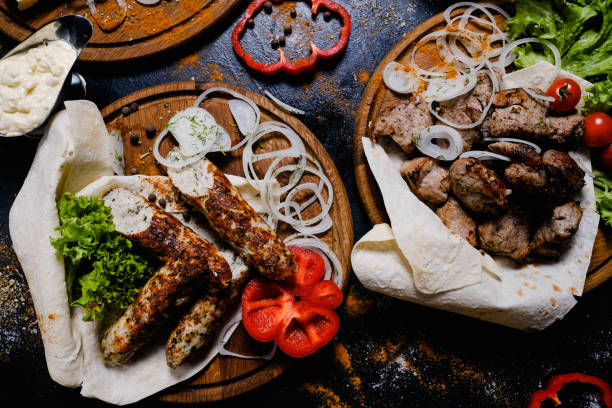Discovering the Hidden Treasures of Armenian Cuisine
Armenia, a small but culturally rich country in the South Caucasus, boasts a culinary tradition that is as ancient as its history. From the tender barbecue, known as Khorovats, to the sweet and flaky Gata, Armenian cuisine is a true adventure for the palate. Let's take a journey through the unique flavours and techniques that make up this lesser-known culinary tradition.

The History and Influence of Armenian Cuisine
Armenian cuisine has a history dating back over 2000 years, making it one of the oldest culinary traditions in the world. It has been shaped by the country’s geographical location at the crossroads of Europe and Asia, and by its history of invasions and migrations. This has resulted in a cuisine that is rich in diverse flavors, incorporating elements from Middle Eastern, Mediterranean, and Eastern European cuisines, yet retaining its own unique identity.
Armenian Barbecue: The Art of Khorovats
Khorovats is a cornerstone of Armenian cuisine. This traditional barbecue is prepared by skewering chunks of marinated meat, often accompanied by vegetables, and grilling them over an open fire. The result is a tender and flavorful dish that is a staple at Armenian gatherings. Each region has its own variation, with different marinades and meat selections, making Khorovats a versatile and exciting dish to explore.
Lavash: The Unassuming Bread with UNESCO Recognition
Lavash, a thin, soft flatbread, is an integral part of Armenian cuisine. In 2014, it was recognized by UNESCO as an intangible cultural heritage. Lavash is traditionally baked in a tonir, a cylindrical clay oven dug into the ground. The process of making Lavash is considered an art form and is often a communal activity, especially in rural areas.
Dolma: A Versatile Staple
Dolma, a dish of stuffed vegetables or leaves, is another popular Armenian dish. While it’s common throughout the Middle East and Mediterranean, the Armenian version is unique for its use of grape leaves and a wide variety of fillings, including meat, rice, and herbs. It’s a versatile dish that can be adapted to suit different tastes and dietary needs.
Sweet Treats: From Gata to Pakhlava
Armenian desserts are a delightful blend of sweet and nutty flavors. Gata, a flaky pastry filled with sweetened butter and often shaped into intricate designs, is a favorite. Pakhlava, similar to its Turkish counterpart Baklava, is another popular treat, made with layers of thin dough, nuts, and sweet syrup.
- Did you know? Armenia is often considered the birthplace of wine, with evidence of winemaking dating back over 6000 years.
- The Armenian feast: Traditional Armenian meals are often communal, with an array of dishes shared among family and friends.
- Armenian Brandy: Armenia is renowned for its brandy, which was a favorite of famous figures like Winston Churchill.
In conclusion, Armenian cuisine is a treasure trove of unique flavors and techniques that warrant exploration. Its rich history, diverse influences, and communal spirit make it a fascinating culinary tradition that invites us to discover, learn, and, most importantly, savor. As we continue to explore the world’s cuisines, let’s not forget these lesser-known but equally enriching culinary traditions.




